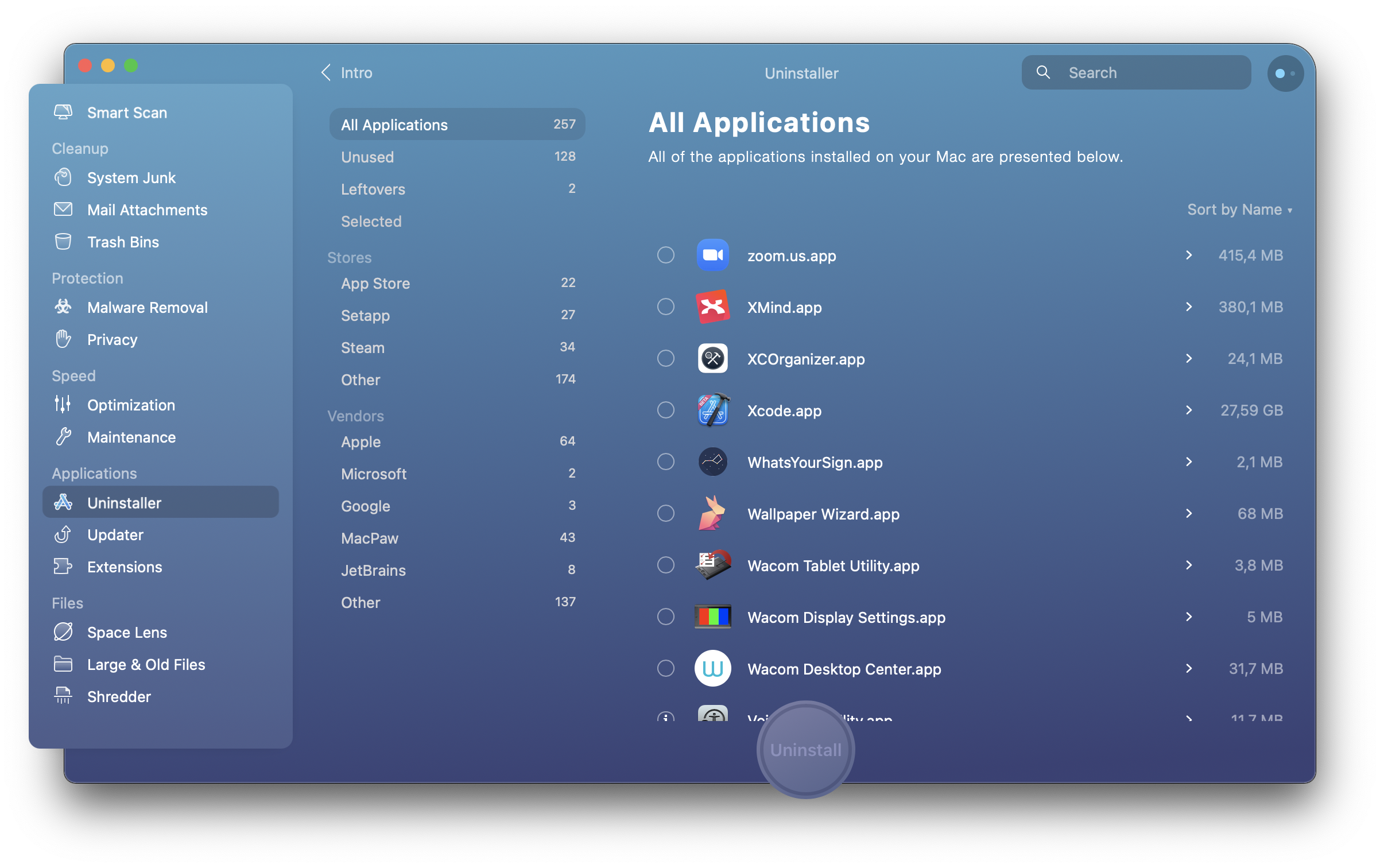How to Fix Mac Migration Assistant Stuck or Frozen For users who need to move from an old Mac to a new Mac, the best choice is to migrate over a wifi connection or wired connection using Migration Assistant. Unfortunately, not all users can complete the transfer job successfully. User story - Apple Migration Assistant stuck at one minute. Apple's Mac OS X was so well thought-out, and my new machine was fast and powerful. When it came time to upgrade in 2012, I got another MacBook Pro without even thinking about it. For Mac OS X 10.6 and earlier, you will need the OEM installer disc. For Mac OS X 10.7 and later, you can use the recovery partition on the original drive. To make sure you have a functional recovery partition, restart your computer and immediately hold down the Command + R keys until the Apple logo appears. If your computer boots into a four.

As a gadget owner, you should be akin to the rare occasion of uncontrolled fit and rage you can experience once your device chooses to have a mind of its own. A recent glitch we noticed with certain Mac computer owners running macOS Sierra was the complaint that mac recovery mode not working.
The first complaint we received was from a user running a Mac mini 2014 who replaced his Hard Disk Drive (HDD) with a Solid State Drive (SDD), he complained of not seeing the Apple logo appearing on the screen to signify his PC was loading. In a bid to fix this glitch, he tried various shortcuts to start the computer in Safe Mode and Recovery Mode to no avail. Hence we pen this article as a detailed solution to the mac recovery mode not working issue.
What is MacBook Recovery Mode?
It would be erroneous to believe all Mac users know what the Mac Recovery Mode is, hence we begin with a basic description of the mode. Mac Recovery Mode is a dedicated partition of the disk that contains a recovery image and an OS X installer duplicate. It is a multifunctional inbuilt Mac utility that enables Mac users safely recover or restore their data from Time Machine, fix or wipe their hard disk, access online help and even to reinstall macOS. Also, with the advent of a software malfunction or issue, the MacBook Recovery Mode helps Mac recover as its name implies. To access macOS Recovery on your Mac, follow the procedure below:
1. Power on your Mac by clicking the Power button.
2. Immediately after 1. above, long press the Command + R key combination on your keyboard until the spinning globe or the Apple logo appears.
3. Wait till you see the macOS utility tab appear then select your preferred course of action.
4. To exit the macOS recovery, select the Shut Down option from the Apple menu.
What to Do when MacBook Recovery Mode won't Work?
In some instances, when it is pertinent for users to restart their MacBook via the recovery mode, they might be distraught to discover that the mac recovery mode is not working. Whenever this happens, more recent Mac computers automatically switch to starting up the macOS from the internet and when this occurs you see the spinning globe in place of the Apple logo.
To save time and to manually induce the macOS recovery over the internet, during startup long press the Option-Command-R buttons or the Shift-Option-Command-R buttons. Should in case the mac recovery mode not working problem still persist, consider executing the following steps:
Method 1: Use Your Time Machine Backup
As a Mac user, it is possible you have Time Machine connected the Backup external drive. If so, follow the below procedure to use its inherent Recovery Mode:
1. Restart your Mac. Click the Options tab when you hear the startup music.
2. Connect your Time Machine and wait. The connected Time Machine should boot after a while.
3. Select the Recovery Drive to boot your Mac.
Method 2: Use a Bootable Disk Drive Utility
It is essential for all Mac users to possess a dedicated USB for this reason that would contain a bootable OS X installer to fix their Mac should the need ever arise. To use a bootable drive in Recovery Mode, follow the steps below:
Wrong Move Mac Os X
1. Restart your Mac. Continuously tap the Options button until you hear a chime sound.

As a gadget owner, you should be akin to the rare occasion of uncontrolled fit and rage you can experience once your device chooses to have a mind of its own. A recent glitch we noticed with certain Mac computer owners running macOS Sierra was the complaint that mac recovery mode not working.
The first complaint we received was from a user running a Mac mini 2014 who replaced his Hard Disk Drive (HDD) with a Solid State Drive (SDD), he complained of not seeing the Apple logo appearing on the screen to signify his PC was loading. In a bid to fix this glitch, he tried various shortcuts to start the computer in Safe Mode and Recovery Mode to no avail. Hence we pen this article as a detailed solution to the mac recovery mode not working issue.
What is MacBook Recovery Mode?
It would be erroneous to believe all Mac users know what the Mac Recovery Mode is, hence we begin with a basic description of the mode. Mac Recovery Mode is a dedicated partition of the disk that contains a recovery image and an OS X installer duplicate. It is a multifunctional inbuilt Mac utility that enables Mac users safely recover or restore their data from Time Machine, fix or wipe their hard disk, access online help and even to reinstall macOS. Also, with the advent of a software malfunction or issue, the MacBook Recovery Mode helps Mac recover as its name implies. To access macOS Recovery on your Mac, follow the procedure below:
1. Power on your Mac by clicking the Power button.
2. Immediately after 1. above, long press the Command + R key combination on your keyboard until the spinning globe or the Apple logo appears.
3. Wait till you see the macOS utility tab appear then select your preferred course of action.
4. To exit the macOS recovery, select the Shut Down option from the Apple menu.
What to Do when MacBook Recovery Mode won't Work?
In some instances, when it is pertinent for users to restart their MacBook via the recovery mode, they might be distraught to discover that the mac recovery mode is not working. Whenever this happens, more recent Mac computers automatically switch to starting up the macOS from the internet and when this occurs you see the spinning globe in place of the Apple logo.
To save time and to manually induce the macOS recovery over the internet, during startup long press the Option-Command-R buttons or the Shift-Option-Command-R buttons. Should in case the mac recovery mode not working problem still persist, consider executing the following steps:
Method 1: Use Your Time Machine Backup
As a Mac user, it is possible you have Time Machine connected the Backup external drive. If so, follow the below procedure to use its inherent Recovery Mode:
1. Restart your Mac. Click the Options tab when you hear the startup music.
2. Connect your Time Machine and wait. The connected Time Machine should boot after a while.
3. Select the Recovery Drive to boot your Mac.
Method 2: Use a Bootable Disk Drive Utility
It is essential for all Mac users to possess a dedicated USB for this reason that would contain a bootable OS X installer to fix their Mac should the need ever arise. To use a bootable drive in Recovery Mode, follow the steps below:
Wrong Move Mac Os X
1. Restart your Mac. Continuously tap the Options button until you hear a chime sound.
2. Connect the bootable installer drive to your Mac.
3. Select the drive from the popup list. Mac will restart then you can repair Mac.
Method 3: Use Mac Internet Recovery
If you have internet connectivity on your mac, then you can successfully try this procedure:
1. Restart your Mac.
2. When you hear the startup music, long press Option + Command + R until you see a globe appear and a status bar.
3. If you use Wi-Fi, select your available Wi-Fi.
4. Wait for the status bar to load completely then follow the prompts to complete the process.
Method 4: Use Third-Party Solutions
Download New Mac Os
Backing up can be a major data for Mac users because its usefulness only becomes important when danger strikes. Hence, certain third-party solutions exist that encourage users to have complete backups as failsafe for their cherished data. An endless myriad of such software exists and can be accessed by using the internet help option in safari upon reboot.
Method 5: Reinstall OS X
Should the frustration of not be able to access your Mac Recovery Mode persist, it might be logical to reinstall your OS X to fix the bugs. This can be achieved by clicking the Reinstall OS X tab and agreeing with the subsequent prompts.
In conclusion, the value we place on our data is only truly felt when we lose them without a backup or failsafe, whether online or on a bootable disk. This highlights that the Mac Recovery Mode not working problem can be solved by accessing your data in the various devices storage entities used before the incidence occurred.
You can choose from icon, list, column, or Cover Flow view. In Cover Flow view, the browser is split horizontally into two sections. The top section is a graphical view of each item, such as folder icons or a preview of the first page of a document. The bottom section is a list view of the items.
To jump, press VO-J. If you're using VoiceOver gestures, keep a finger on the trackpad and press the Control key.
Icon view: Use the arrow keys to move to the item you want.
List view: To move down the list rows, press VO-Down Arrow. To expand and collapse a folder, press VO-. To move the VoiceOver cursor across a row and hear information about an item, press VO-Right Arrow. Or press VO-R to hear the entire row read at once.
Column view: To move down the list until you find the folder or file you want, use the Down Arrow key. To move into subfolders, press the Right Arrow key.
Cover Flow view: To flip through the items in the top section and move automatically through the corresponding list rows in the bottom section, press the Left Arrow or Right Arrow key.
When you find the file or folder you want to open, use the Finder shortcut Command-O or Command-Down Arrow to open it.New Mac Os 11
Piratrash mac os. VoiceOver announces when you have selected an alias or a file or folder you don't have permission to open.
